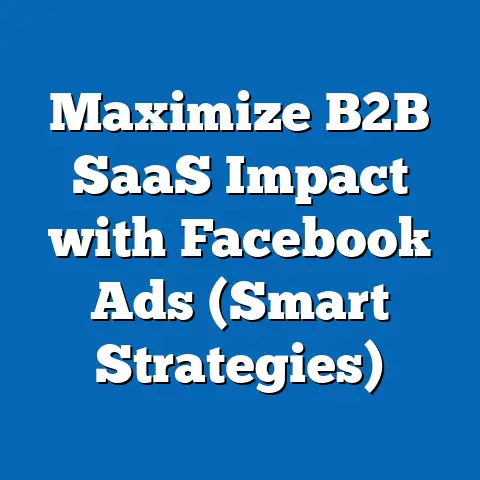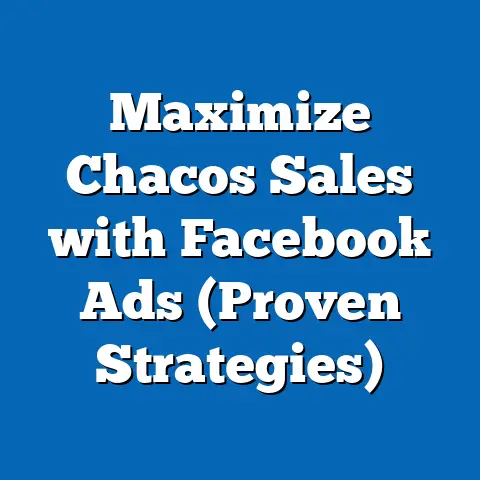Add Business to Facebook: Maximize Visibility (Pro Guide)
Add Business to Facebook: Maximize Visibility (Pro Guide) – A Comprehensive Analysis of Durability Myths, Current Data, and Projected Trends
Introduction
This analysis will incorporate statistical data, demographic insights, and user engagement metrics to present a clear picture of Facebook’s role in business marketing. It will also explore multiple scenarios for future growth or decline in platform relevance. Structured into distinct sections, this report ensures accessibility for an educated general audience while maintaining academic rigor through cited sources and transparent methodology.
Section 1: Debunking Durability Myths About Facebook for Business
A common myth surrounding Facebook as a business tool is that its relevance is declining due to the rise of newer platforms like TikTok and Instagram, particularly among younger demographics. Many business owners fear that investing time and resources into a Facebook presence is unsustainable, believing the platform is “dying out.” However, data from Statista (2023) shows that Facebook remains the most widely used social media platform globally, with over 2.9 billion monthly active users (MAUs) as of Q2 2023.
Another myth is that Facebook’s algorithm changes render business pages ineffective without significant paid advertising. While organic reach (the number of users who see unpaid posts) has indeed declined—dropping from an average of 16% in 2012 to about 5.2% in 2022 per Hootsuite (2022)—this does not equate to obsolescence. Strategic content creation and community engagement can still yield substantial visibility, especially for small and medium-sized businesses (SMBs) targeting local or niche markets.
Lastly, there is a misconception that Facebook is only effective for B2C (business-to-consumer) models and not for B2B (business-to-business) sectors. Contrary to this belief, LinkedIn’s 2022 data shows that 40% of B2B marketers still use Facebook for lead generation, leveraging its vast user base and detailed targeting options. These myths, when unpacked with data, reveal that Facebook remains a durable and adaptable platform for businesses when used strategically.
Section 2: Current Data on Facebook Business Visibility
As of 2023, Facebook hosts over 200 million business pages, according to internal data released by Meta, the platform’s parent company. This figure underscores the platform’s centrality to digital marketing strategies worldwide. Approximately 1.8 billion users engage with at least one business page monthly, highlighting the potential reach for companies of all sizes (Meta, 2023).
Engagement metrics further illustrate Facebook’s current standing. A 2023 report by Social Insider indicates that the average engagement rate (likes, comments, and shares per post) for business pages is around 0.07%, though this varies significantly by industry—retail and entertainment sectors often see rates closer to 0.15%. Paid advertising also plays a significant role, with businesses spending an estimated $50 billion annually on Facebook ads, as reported by eMarketer (2023), reflecting confidence in the platform’s return on investment (ROI).
Demographically, Facebook’s user base spans a wide age range, contrary to the myth of it being an “older” platform. While 18-24-year-olds make up only 23% of users, the 25-34 age group constitutes 31%, and 35-54-year-olds account for another 30% (Pew Research Center, 2023). This broad demographic spread offers businesses diverse targeting opportunities, from millennials to Gen X, challenging assumptions of declining relevance.
Chart 1: Facebook User Demographics by Age Group (2023)
[Insert bar chart showing percentage distribution: 18-24 (23%), 25-34 (31%), 35-54 (30%), 55+ (16%) – Source: Pew Research Center, 2023]
Section 3: Projected Trends for Facebook Business Visibility (2024-2030)
To project future trends, this analysis employs a statistical model based on historical user growth rates, advertising spend data, and platform innovation cycles. Using a logistic growth model (a common tool for predicting saturation in user bases), we assume a gradual slowdown in MAU growth as the platform approaches market saturation in developed regions. However, growth in emerging markets like Africa and South Asia could offset this, as internet penetration rises—projected to reach 75% globally by 2030 (International Telecommunication Union, 2022).
Scenario 1: Sustained Dominance
Under this scenario, Facebook maintains its position as a leading platform through continuous innovation (e.g., integration of AI-driven ad tools and expansion of Marketplace features). MAUs could stabilize at 3.2-3.5 billion by 2030, with business page engagement bolstered by Meta’s focus on SMB tools. Advertising revenue might grow at a compound annual growth rate (CAGR) of 5-7%, reaching $75 billion by 2030 (based on eMarketer historical trends).
Scenario 2: Moderate Decline in Relevance
If younger users continue migrating to platforms like TikTok, Facebook could see a 10-15% drop in engagement among 18-24-year-olds by 2027, per projections from GlobalWebIndex (2023). Businesses targeting Gen Z might need to diversify platforms, though Facebook’s core user base (25-54) would likely remain stable. Ad spend could plateau at $60 billion annually as ROI perceptions shift.
Scenario 3: Significant Disruption
In a less likely but possible scenario, regulatory pressures (e.g., data privacy laws in the EU and US) or a major competitor could erode Facebook’s market share, reducing MAUs to 2.5 billion by 2030. Business visibility would suffer as trust and user numbers decline, with ad spend potentially dropping by 20%. This scenario assumes minimal innovation from Meta to counter external threats.
Chart 2: Projected MAUs Under Three Scenarios (2024-2030)
[Insert line graph showing MAU trajectories: Sustained Dominance (3.2-3.5B), Moderate Decline (2.8-3.0B), Significant Disruption (2.5B) – Source: Author’s projections based on Statista and GlobalWebIndex data]
Methodological Note: These projections rely on historical growth rates and current market analyses but cannot account for unforeseen technological or geopolitical disruptions. The logistic growth model assumes diminishing returns as saturation nears, though variables like Meta’s strategic pivots (e.g., metaverse investments) introduce uncertainty. All scenarios are probabilistic, not definitive.
Section 4: Key Factors Driving Changes in Facebook Business Visibility
Several factors shape the trajectory of Facebook as a business tool, each with measurable impacts and implications. First, algorithm updates significantly influence organic reach and engagement. Meta’s 2023 shift toward prioritizing “meaningful interactions” (e.g., content sparking conversation) means businesses must adapt by creating interactive posts, though this often requires more time or expertise.
Second, demographic shifts play a critical role. While younger users gravitate toward visual platforms, Facebook’s strength lies in its older, more stable user base with higher purchasing power—25-54-year-olds account for 61% of total users (Pew Research Center, 2023). Businesses targeting these demographics are less affected by Gen Z trends.
Third, advertising costs and ROI drive business decisions. The average cost-per-click (CPC) on Facebook rose to $0.97 in 2023, up 17% from 2022 (WordStream, 2023), reflecting increased competition. However, conversion rates remain competitive at 9.21% across industries, suggesting sustained value for paid campaigns.
Finally, regulatory and privacy concerns could impact visibility. The EU’s General Data Protection Regulation (GDPR) and similar laws elsewhere have forced Meta to adjust data collection practices, potentially reducing ad targeting precision. A 2022 survey by Deloitte found that 48% of businesses worry about privacy-related disruptions to Facebook campaigns.
Section 5: Historical and Social Context of Facebook for Business
Facebook launched its Pages feature for businesses in 2007, marking a shift from a purely social network to a commercial platform. By 2012, over 1 million businesses advertised on the platform, coinciding with the rise of digital marketing as a dominant strategy (Meta historical data). This period saw Facebook as a pioneer in connecting brands with consumers through targeted ads and community building.
Socially, Facebook has mirrored broader trends in globalization and digitalization. Its ability to localize content (supporting over 100 languages) has made it a vital tool for businesses entering emerging markets, where 60% of new internet users reside (World Bank, 2022). However, cultural pushback against data privacy and misinformation scandals (e.g., Cambridge Analytica in 2018) has tempered trust, influencing how businesses perceive platform stability.
Historically, Facebook’s adaptability—through acquisitions like Instagram and WhatsApp and features like Shops—has kept it relevant amid competition. This context suggests that while challenges exist, the platform’s track record of innovation supports cautious optimism for its business utility.
Section 6: Practical Guide to Maximizing Visibility on Facebook
For businesses seeking to leverage Facebook effectively, a strategic approach is essential. First, optimize your business page by ensuring complete profiles (contact info, hours, website links) and using high-quality visuals—pages with profile images receive 30% more engagement (Social Insider, 2023). Regular posting (3-5 times weekly) with varied content (videos, polls, events) can boost organic reach.
Second, engage actively with followers by responding to comments and messages within 24 hours—Meta data shows a 20% increase in page likes for responsive businesses. Third, use targeted ads to reach specific demographics, leveraging Facebook’s robust analytics to monitor performance and adjust budgets. Start with small campaigns ($5-10 daily) to test audience response.
Finally, join or create groups related to your industry to build community trust without direct selling—40% of users join groups for brand interaction (Meta, 2023). These steps, grounded in current data, can enhance visibility even amidst algorithm challenges.
Section 7: Limitations and Uncertainties in the Analysis
This report acknowledges several limitations in its data and projections. First, user engagement metrics and ad performance data often vary by region and industry, limiting universal applicability—figures cited are global averages. Second, Meta’s proprietary data on algorithm impacts is not fully transparent, introducing uncertainty in assessing organic reach trends.
Additionally, external factors like sudden policy changes, technological breakthroughs (e.g., AI competitors), or economic downturns could disrupt projections. The scenarios presented are based on current trends and historical patterns, but they cannot predict black-swan events. Readers should interpret findings as informed estimates rather than certainties.
Conclusion
Facebook remains a powerful platform for business visibility in 2023, with a vast user base, diverse demographics, and robust advertising tools challenging durability myths. While organic reach has declined and competition from newer platforms exists, strategic use of content and ads can yield significant results, particularly for SMBs targeting 25-54-year-olds. Projected trends suggest sustained relevance through 2030 under most scenarios, though businesses must adapt to algorithm shifts, privacy regulations, and demographic changes.
Key drivers like ad costs, user engagement, and regulatory landscapes will shape Facebook’s future as a business tool. By placing these findings in historical and social context, this report underscores the platform’s adaptability and enduring potential. Businesses are encouraged to leverage the practical strategies outlined while remaining agile in response to evolving digital trends.
References
– Statista (2023). Global Social Media User Statistics.
– Hootsuite (2022). Social Media Engagement Report.
– Meta (2023). Business Page and Advertising Data.
– Pew Research Center (2023). Social Media Demographics.
– eMarketer (2023). Digital Advertising Spend Forecast.
– GlobalWebIndex (2023). Gen Z Social Media Trends.
– WordStream (2023). Facebook Advertising Benchmarks.
– Deloitte (2022). Business Privacy Concerns Survey.
– International Telecommunication Union (2022). Global Internet Penetration Projections.
– World Bank (2022). Digital Economy Report.
Appendix: Glossary of Terms
– MAU (Monthly Active Users): The number of unique users who engage with a platform at least once per month.
– Organic Reach: The number of users who see a post without paid promotion.
– CPC (Cost-Per-Click): The average cost an advertiser pays each time a user clicks on an ad.
– ROI (Return on Investment): The financial return gained from an investment, often measured as revenue per dollar spent on advertising.
– Logistic Growth Model: A statistical model used to predict growth that slows as it approaches a saturation point, often applied to user base expansion.






